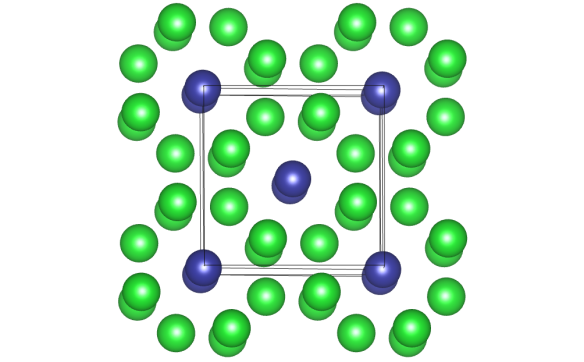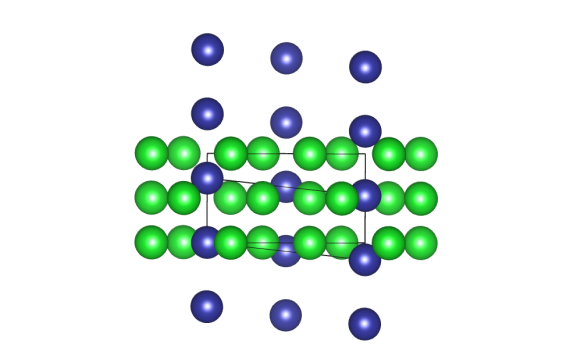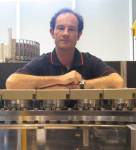Elements Under Pressure: Barium
What does it look like?

Image generated by the VESTA (Visualisation for Electronic and STructural analysis) software http://jp-minerals.org/vesta/en/
What is it?
This is the high pressure phase Barium IV, published in 1999. It was found using a combination of single-crystal and powder X-ray diffraction at 12.1GPa. In other words, about 100,000 times atmospheric pressure.
There may be some deep anthropic reason why most elements are structurally so boring at room temperature and pressure. Then again, it might just be one of those things. But it turns out that in extreme conditions (at least from a human perspective) elements can do bizarre things. This high pressure structure of barium shows an octagonal cage-like structure (the green atoms) with guest atoms (the dark blue atoms) sitting in the middle. The host structure is tetragonal, and the image shows the ab- plane just slightly offset so you can see the difference between the z=0 and z=1/2 atoms (the z=0 atoms look doubled up).
The first bizarre thing about this structure is that while the structure is commensurate in the a and b directions (meaning the unit cell repeats itself in a regular way), in the c direction - out of the screen - the guest atoms are incommensurate with the host atoms. Turning the structure around, we've shown a couple of repetitions along the c-axis of the guest structure:

Image generated by the VESTA (Visualisation for Electronic and STructural analysis) software http://jp-minerals.org/vesta/en/
So incommensurate means that the cell lengths of the two structures do not divide into each other evenly. So, in the c-axis, while each of the host and guest structures repeats itself, the combined structure never does.
The second bizarre thing is that, while we've used different colours to show the host and guest structures, it's all barium! Both atoms are the same.
Where does the structure come from?
This structure comes from work performed by high pressure specialists from the University of Edinburgh at the synchrotron at Daresbury. The publication is not surprisingly called "Self-hosting incommensurate structure of Barium IV", Nelmes et al., Physical Review Letters 83 (1999) 4081.






